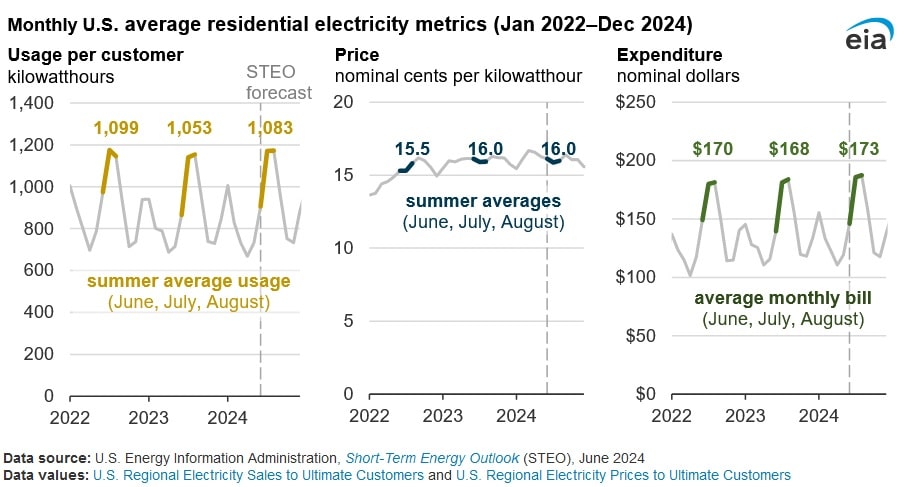U.S. Residential Electricity Bills Expected to be Higher This Summer: EIA

Monthly residential electric bills this summer (June through August) are projected to average $173 in the U.S., marginally higher than last summer’s average of $168, according to a June 13 report published by the U.S. Energy Information Administration.
The agency projects increased electricity usage this summer due to the expectation of higher temperatures this summer. Lower residential power prices across most regions in the U.S. will partially offset the higher monthly electric bill that most residential customers are expecting.
U.S. household power consumption is usually higher in the summer compared to other periods in the year, due to around 90 percent of U.S. households using air conditioning. Consumers situated in the southern states along the Gulf Coast usually utilize higher amounts of electricity because of hot summer weather. Households in states with milder temperatures along the Pacific Coast and in New England consume lower volumes of power during summer in comparison to other regions.
The agency is projecting marginally warmer weather due to which average U.S. household electricity usage is expected to be three percent higher during June, July, and August in comparison to the same months during 2023. Forecasting of summer temperatures has some degree of uncertainty and as a result could be inaccurate. If temperatures turn out to be higher than expected then households could witness elevated electricity costs, particularly in the southern states.
The agency projects average U.S. residential retail power price this summer to be 16 cents per kilowatthour (kWh), which is in a similar region compared to last summer. U.S. electricity prices on the wholesale market, a proxy of generation expenditures, were relatively higher in 2021 and 2022, but declined by around 30 -50 percent during 2023, in line with lower gas prices.
Despite a decline in commodity costs, non-commodity costs across the U.S. continue to increase. Transmission and distribution costs have been key drivers behind the increase in U.S. retail electricity prices in recent years. The cost of distribution and transmission has increased on the back of companies developing new infrastructure or changing existing assets and pipelines to assist in integrating growing renewable generation sources.
EnerKnol Pulses like this one are powered by the EnerKnol Platform—the first comprehensive database for real-time energy policy tracking. Sign up for a free trial below for access to key regulatory data and deep industry insights across the energy spectrum.
ACCESS FREE TRIAL